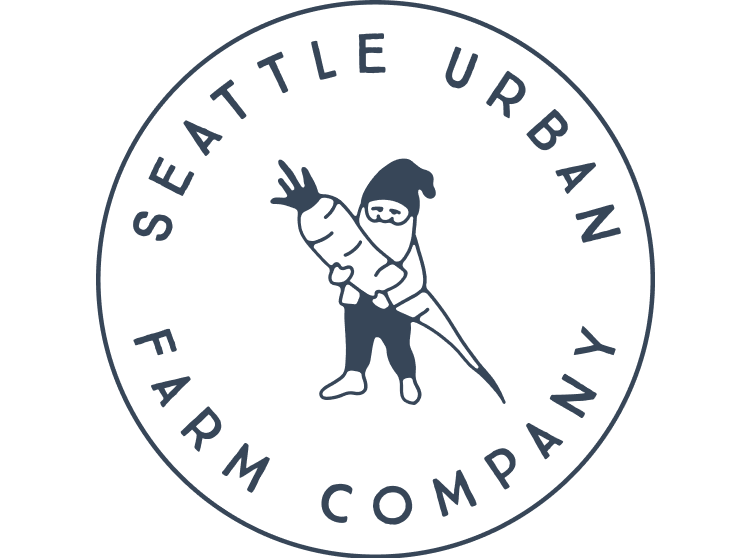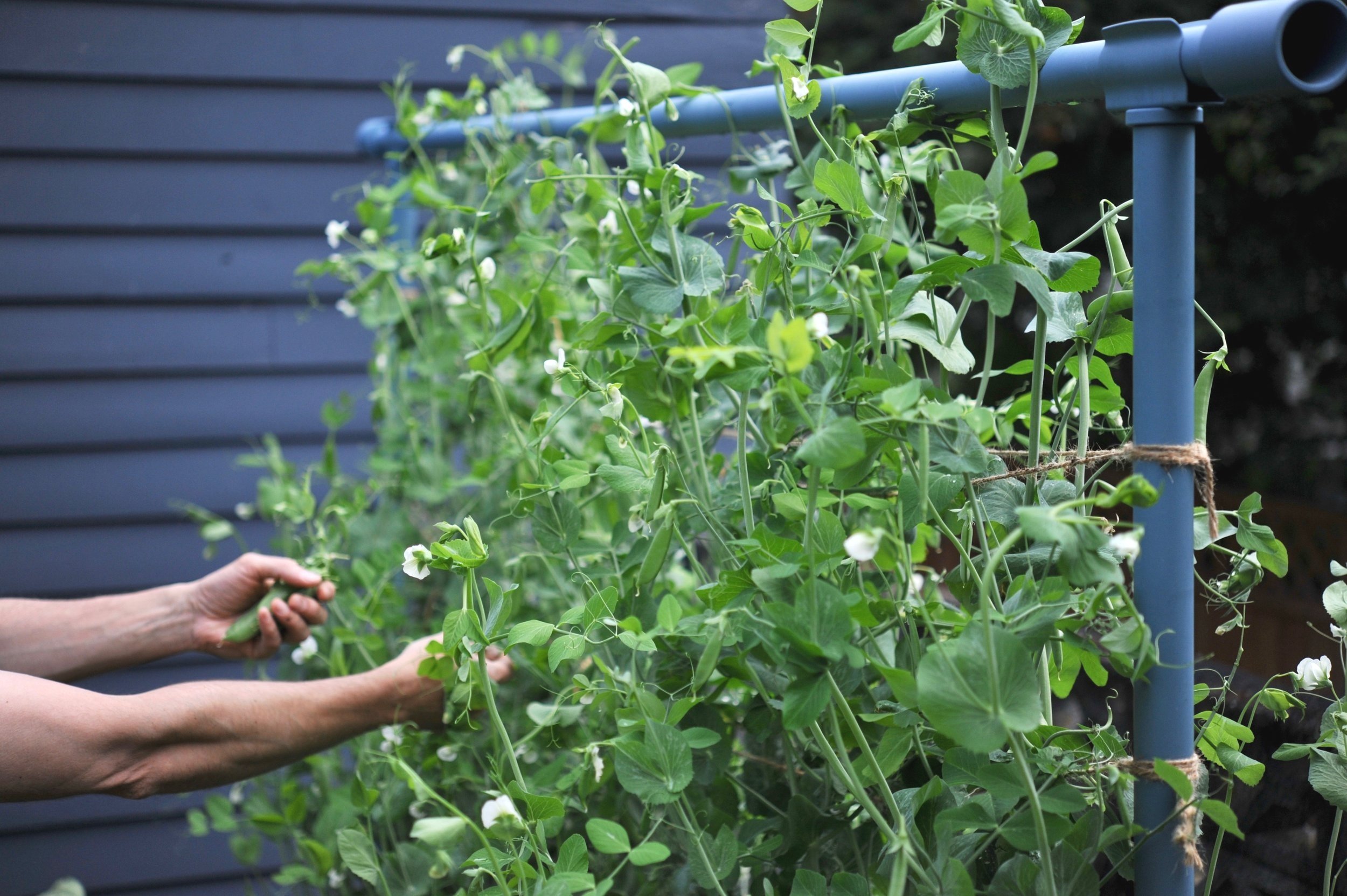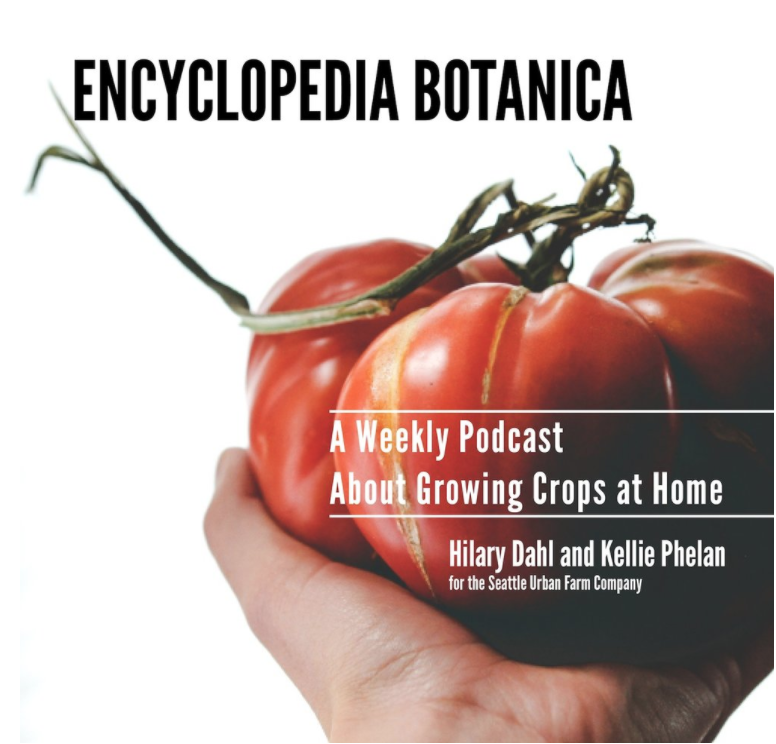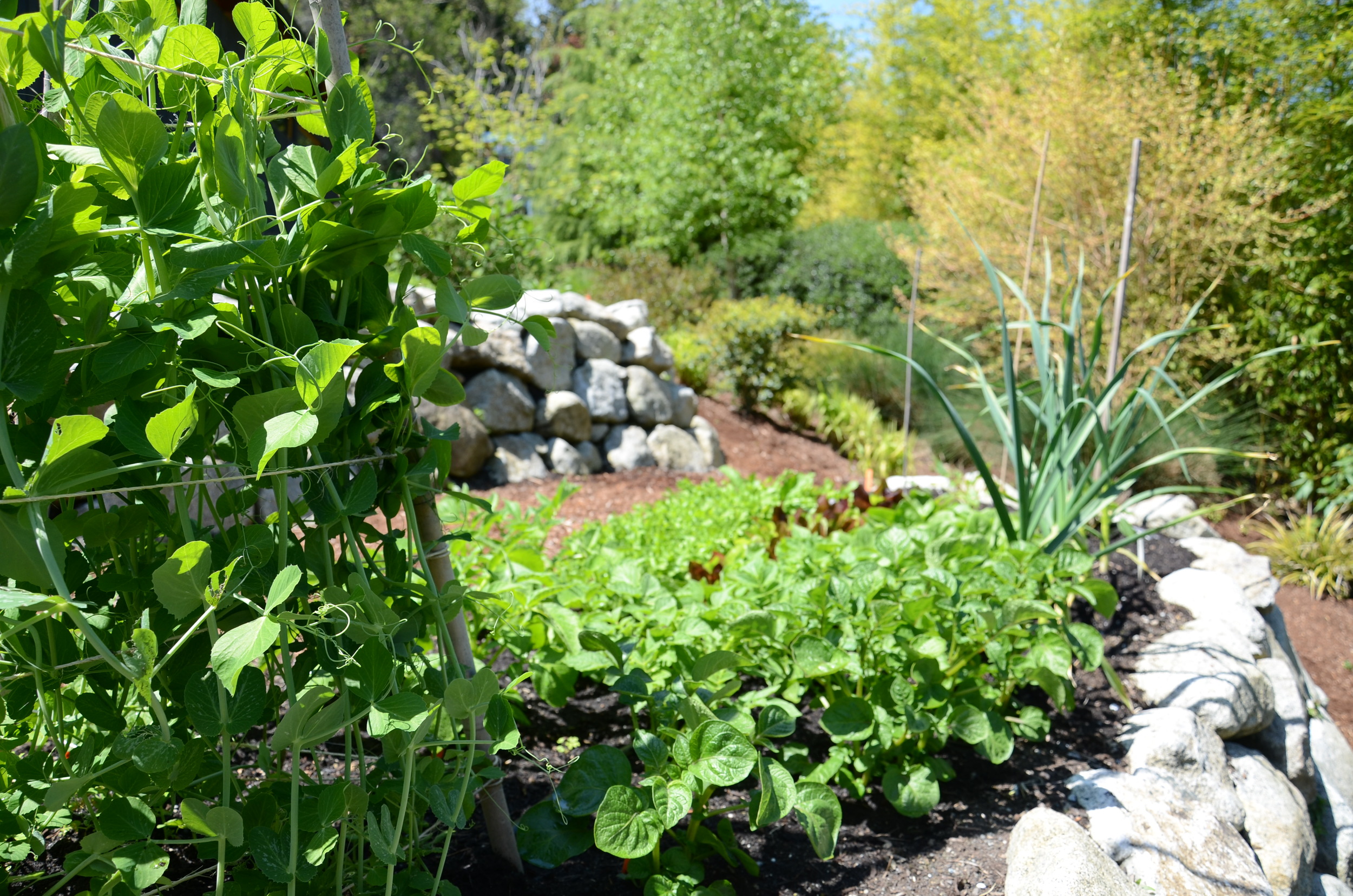Peas aren’t as good as turnips, but they are pretty good. Peas are the first crop that we plant outside in the spring. Unlike many crops, they are extremely tolerant of cold weather, even when germinating, so they can be planted outside as early as mid-February. Many gardeners correlate planting dates with important holidays so they are easier to remember (e.g. planting potatoes on St. Patrick’s Day, planting chocolate on Valentine’s Day, or planting hot dogs on the Fourth of July). Following this tradition, peas are traditionally planted starting on President’s Day, but that doesn't mean that it is too late to plant them now:
We like to start peas indoors, a few trays every week, starting in late January. We let the plants germinate and grow about 3-4” tall and then transplant them into the garden. At the same time we are transplanting the peas into the garden, we direct seed another row of peas so the harvest period is spread out over a longer period of time.
Peas are a nitrogen-fixing plant, which means that they actually add nitrogen to the soil while they grow. Nitrogen is a primary nutrient for plants (it is responsible for healthy vegetative growth) and most vegetable crops absorb a lot of it from the soil, so nitrogen-fixing plants are incredibly beneficial to the garden. Peas, and other leguminous crops are able to add nitrogen to the soil because they have a symbiotic relationship with particular strains of bacteria. Even though the atmosphere is almost entirely made out of nitrogen (78%), plants are unable to capture and use nitrogen in the atmospheric form. The Rhizobia bacteria live on the roof nodes of the plant and convert atmospheric nitrogen (N2) into a new form (NH3) that plants are able to absorb. Adding extra Rhizobia bacteria to the soil, increases the vigor and yield of your pea plants. Whenever we plant peas, we add an “inoculant” of bacteria (available at nurseries and seed catalogs). The most effective method is to make “slurry”, wherein you put your pea seeds and a little inoculant powder into a cup, add a little water and mix it together. The inoculant will coat the seeds and then you can plant them in the tray or directly into the garden (later in the season, you can also use this technique for beans).
Like any other crop, there are numerous types and varieties of peas to choose from. We like to grow Sugarsnap, Dwarf Grey Snow Peas and Oregon Giant. Keep in mind that peas are vining crops and might need some trellising support. The Sugarsnap peas can grow up to 10’ and need a tall sturdy trellis to grow on. We typically set up a 5-6’ trellis and snip off the tops of the plants when they reach the top of the trellis. If they are not topped, they will grow above the support and eventually fall over and break. Cutting the tops of the plants encourages them to produce more flowers on the lower section of the vine and start flowering earlier. Shorter vines like the Dwarf Grey benefit from small stakes (2-3’ tall) but can be grown without any trellising at all, so they are great varieties if you don’t want to set up a trellis.
A few other notes:
If you are growing tall vine peas, keep an eye on them as they grow because you may need to help train them onto their trellis, adding pieces of twine to hold them in place or gently weaving them into the trellis. (very gentle, they break easily!)
Also, keep in mind that, in the Pacific Northwest, your peas will inevitably end up with powdery mildew in the early-mid summer (the vines will be covered in white powder). There are mildew resistant varieties like Super Sugarsnap, but we find that these varieties are less vigorous than the regular type and produce fewer pods so we continue to use the Sugarsnap variety and just plan pull them out once the mildew has completely overcome the vines.
Once they start to fruit (soon after the white flowers appear) plan to harvest the peas regularly so the pods do not become overripe and unpalatable.
Good luck!
Place peas in a part of your garden where they won't shade other crops.
Harvested Oregon Giant Snow Peas











